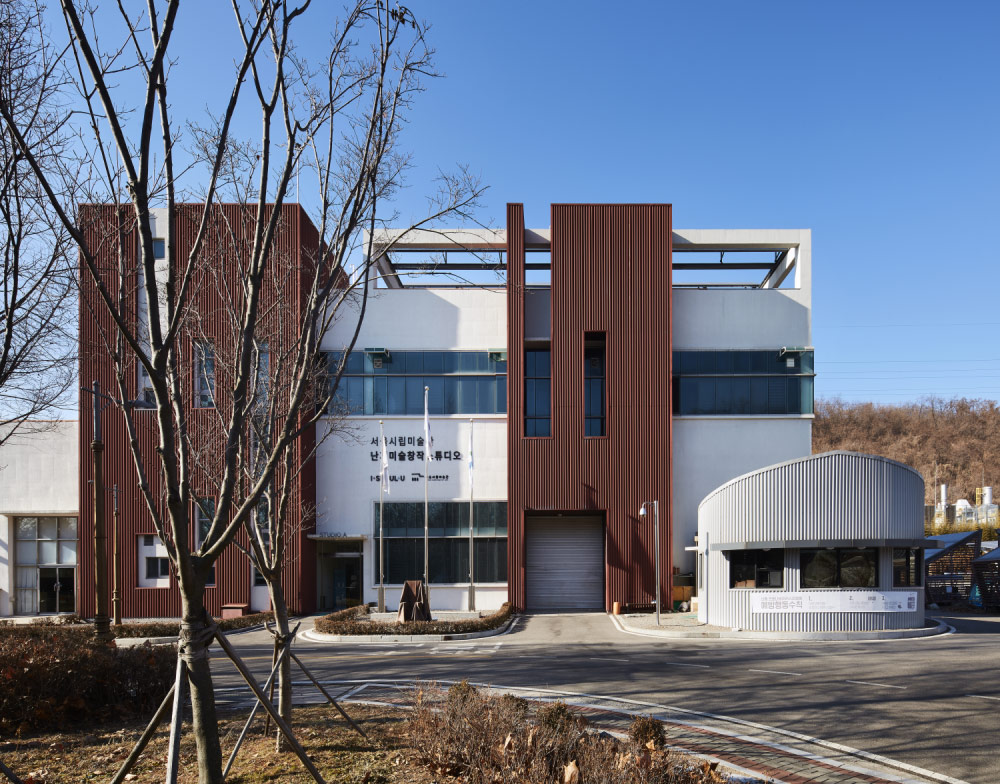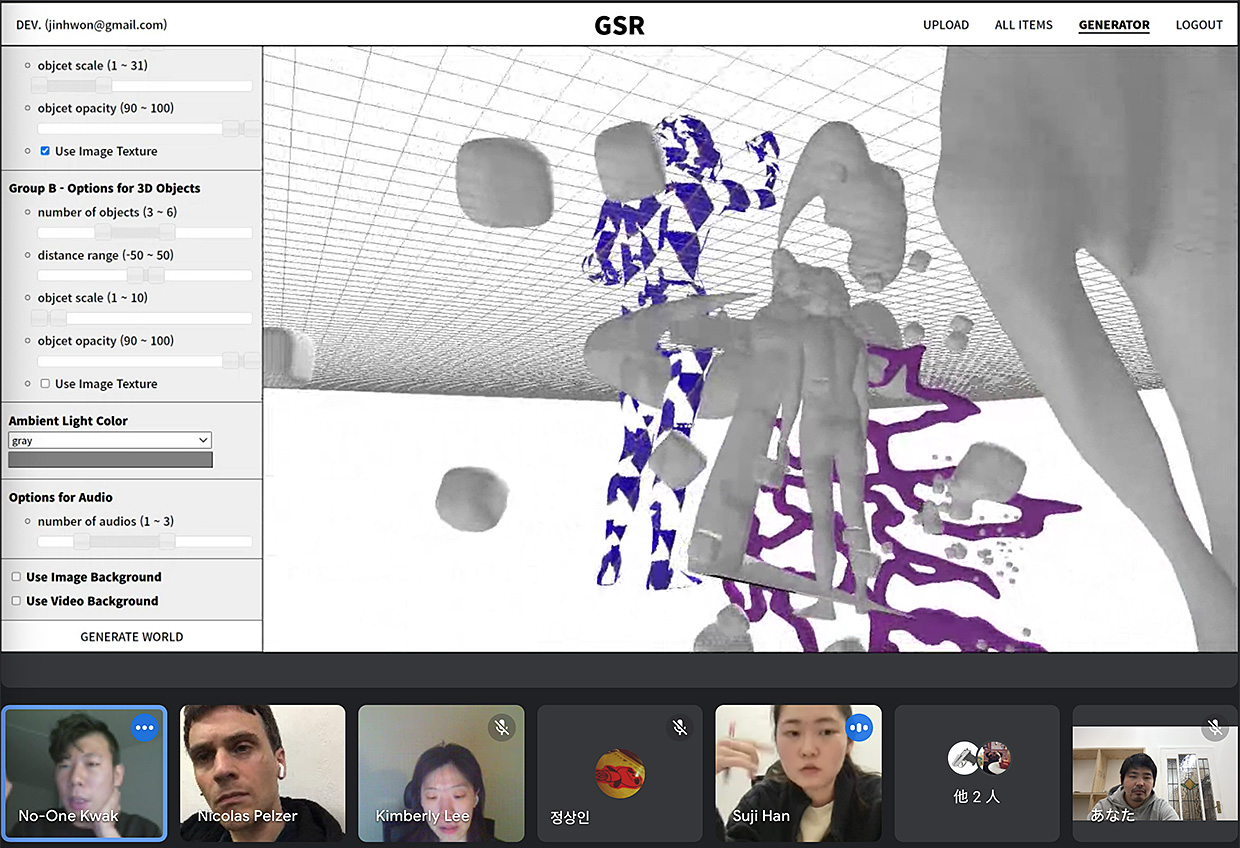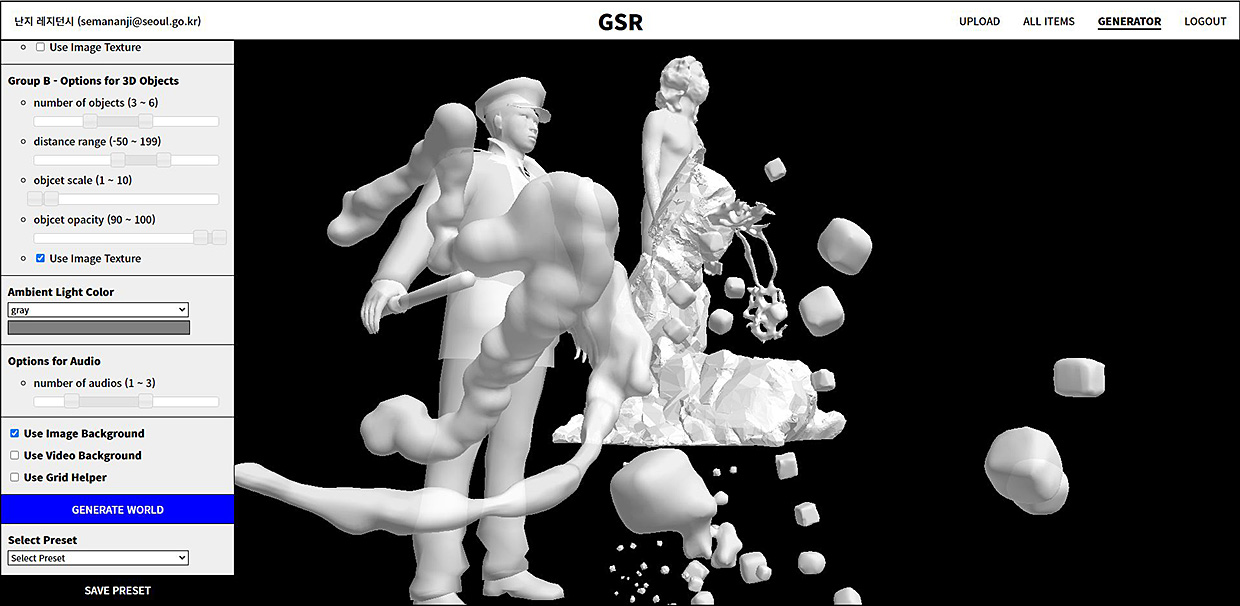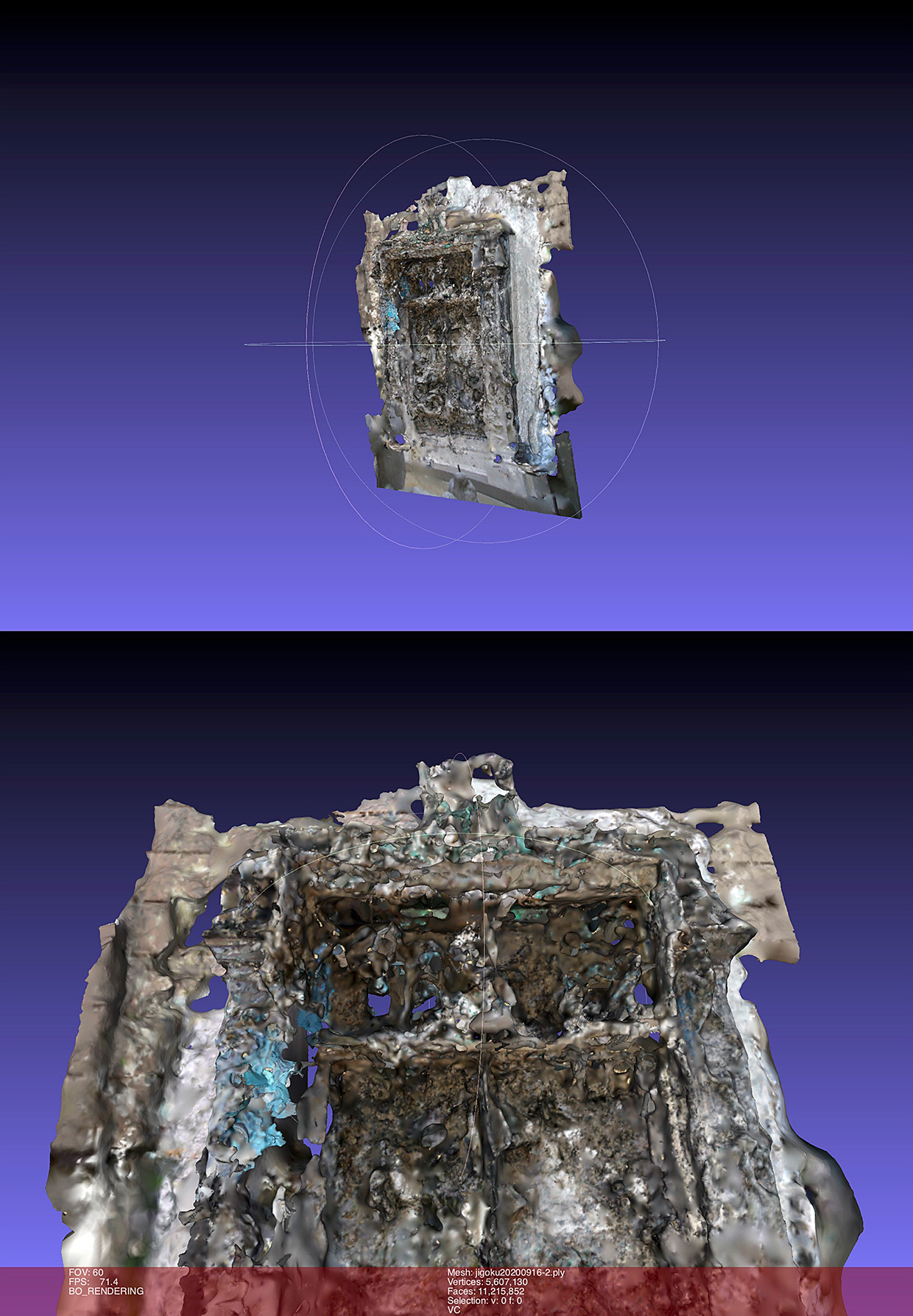Exchange Residency Program
Program for 2021
For this year’s program, ARCUS worked with SeMA Nanji Residency. The participating artist Daisuke Ida collaborated with four Korean artists and one German artist using a digital platform that SeMA Nanji Residency built. The created artwork was presented online as a digital project and also exhibited at Seoul Museum of Art. In this way, the program sought and proposed new possibilities for online residency formats and artistic collaboration at a time when travel was restricted due to the coronavirus pandemic.
Program Period
January 5 – March 15, 2022 (70 days, online)
Partner Institution – SeMA Nanji Residency (South Korea)

撮影:Kim YongKwan
SeMA Nanji Residency was opened in 2006 by renovating a leachate treatment facility in Nanjido, Seoul. The residency operates various programs designed to revitalize international exchanges and provides studio spaces for artists to allow them to concentrate on their artistic activities in a stable environment. Located in central Seoul, the facility has twenty-five studios, labs, circular galleries, and outdoor workshops where programs to nurture and support talented artists and researchers.
https://sema.seoul.go.kr/en/visit/nanji_residency
Selection
The Japanese artist was selected by SeMA Nanji Residency and the ARCUS Project Administration Committee from those nominated by the committee.
Ida Daisuke
Japan

Born in Tottori Prefecture in 1987. Lives and works in Tokyo. Daisuke Ida completed a master’s course in sculpture at Tokyo University of the Arts in 2015. In his practice, he investigates the nature of sculpture, employing a wide range of media―from sculpture to moving image and 3D computer graphics―to visualize the invisible structures of contemporary society as well as the awareness and desires of the people who live in it. Since 2016, he has created what he calls “photo sculpture,” using online image data anonymously uploaded by people across the world to sculpt objects and the body as they exist in the age of the internet.
https://www.daisukeida.com
[Selected Exhibitions and Activities]
2021 Tokyo Biennale 2020/2021, Shin Tokyo Building, Tokyo
2020 Public Device, University Art Museum, Tokyo University of the Arts, Tokyo
2018 Photo Sculpture, 3331 Arts Chiyoda, Tokyo
2017 LOVE LOVE SHOW The second, Aomori Museum of Art, Aomori
2016 Fujinoyama Biennale 2016 Fujiyama Time Machine, Fuji City, Shizuoka

Meeting of participating artists
Photo courtesy: SeMA Nanji Residency

Platform
Photo courtesy: SeMA Nanji Residency

Digital images as material for collaboration.
(The Gate of Hell, 2022)
Reason for Nomination
Organized by ARCUS Project for the first time with SeMA Nanji Residency in Seoul, South Korea, the Exchange Residency Program will build a digital platform for artistic practice carried out collaboratively by six Japanese, Korean and German artists working in different media. It is a new format for an artist residency, one that pursues ways to realize artistic exchange online even in the midst of the coronavirus pandemic.
In his practice, Daisuke Ida shuttles back and forth between the real and the virtual, exploring the nature of the contemporary era and of sculpture as a medium. In The Gates of Hell, which Ida describes as a “photo sculpture,” he assembled and analyzed image data of Auguste Rodin’s titular sculpture from the almost infinite numbers available online, and then used the data to produce a 3D-printed version of The Gates of Hell. This process of turning an actual object into an image, and then an image back into three-dimensional object seems to express the expectations and desires of the people who have taken photos of versions of The Gates of Hell around the world. Through the program, I hope Ida engages in discussions with Korean artists to open up new possibilities for creativity during the pandemic, along with enhancing his own practice. (Director, Ozawa Keisuke)
Artist Statement
The program this time was highly experimental: instead of actually going to South Korea, the entire production process was conducted online. This endeavor incorporated the sense of searching for new residency formats of the post-pandemic age.
As per the program’s approach, each artist was asked to produce 3D data, images, sound, and video in their respective country, and upload this material to an online platform to be randomly combined. And so it began, none of us knowing where this would take us. I lived my life in Tokyo as normal, taking part in discussions two or three times a week.
I was mainly in charge of the 3D data. Given the contingent and online nature of the work, I wanted to integrate those elements also into the 3D data. I collected images of a particular sculpture from photos taken and posted online by ordinary tourists, and arranged these into 3D data.
Each of the artists ultimately uploaded around forty pieces of material, forming “one” artwork. The artist sets the color, sound, data number, and so on, and these are then randomly arranged and outputted in a virtual space. The number of artworks that can be set and output like this are infinite.
I sensed the contingency that emerged with the gradual fusion of individual elements not only in the work itself but also in the production process. Though the project was plagued by unexpected challenges, it also gave me suggestions for my next work at sudden moments. I wasn’t able to go to Korea, but could learn a lot of new Koreas through the exchange I had with the other artists. Having arranged those as material, does the (tentative) “Korea” that exists inside my mind match the real Korea? I’d like one day to go check.